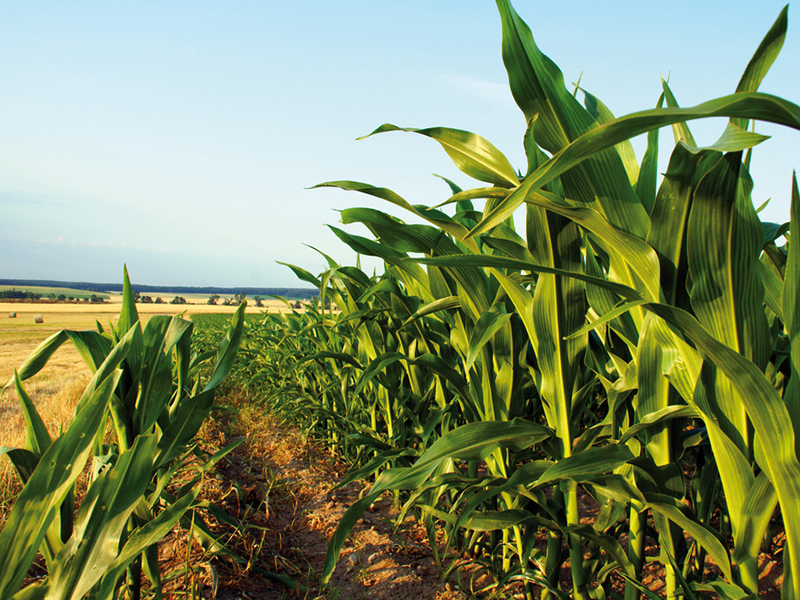Matching nitrogen availability to crop demand is helping one cattle-rearing business produce high yields of top-quality maize silage.
As part of Pathway Farming’s integrated beef supply chain, Hugh Broom is committed to rearing youngstock that will go on to produce premium beef grown to tight weight, age and conformation specifications.
A consistent diet is key, says Hugh, who grows grass and forage maize on 112ha of varied soils at Sondes Place Farm, Dorking in Surrey.
He aims for the highest quality maize forage throughout the clamp, which is fed in a total mixed ration using a cloud-based feed management system.
“This, along with regular weighing to monitor stock performance, enables us to constantly review rations and optimise feed conversion ratios,” says Hugh.
He is growing 40ha of KWS Cito, a high yielding ultra-early variety that produces the high starch content and energy value he requires. “We tend to grow maize on the lighter soils but we aim for at least 20t/acre, so we have to get the management right.”

Nitrogen management is key to fulfilling crop potential. All the rearing unit’s manure, about 1500t, is used on the maize ground. “We stack it in field piles through the winter,” says Hugh. “In early spring I take samples from each pile for analysis so we can accurately calculate application rates and assess what additional inorganic nitrogen we need.”
The next step is to ensure the nitrogen is there when the crop needs it. Agrovista’s Linda Sheppard, Hugh’s agronomist, says maize requires approximately half of its nitrogen after tasselling.
“It has been quite popular to apply as much FYM or slurry as NVZ rules allow, as well as bagged fertiliser before crop emergence, to make up total crop need,” she says.
“In theory, this helps ensure crops have enough nitrogen to maximise potential in the reproductive and grain filling stages. But if weather is too wet or dry, or if insufficient nitrogen has been applied early, it is too late once the crop starts to tassel to apply an additional dose of ammonium nitrate.
However, we now have products to help ensure that nitrogen is available when the plant needs it. This helps maximise the yield and quality potential of the crop while minimising the risk of nutrient loss, which is good for the environment and the wallet.”
Two years ago she advised Hugh to start using Instinct, a nitrogen stabiliser which slows down the activity of soil nitrosomas bacteria for a period of 8-10 weeks. The bacteria convert ammonium to nitrate (the form of nitrogen taken up by plants), so temporarily slowing down their activity reduces nitrogen losses through leaching and volatilisation, keeping more nitrogen in the soil for longer, benefiting the crop and the environment.
Linda advises using the product as close as possible to when the main nitrogen source is applied, whether organic manures or fertiliser. “Instinct is often tank-mixed with glyphosate ahead of muckspreading, then worked into the soil, which is ideal. It can also be applied with slurry. You can also use it with pre-emergence herbicides, but it needs 10mm of rain within 10 days to wash in. We don’t often get that in May in the south east.”
Hugh says: “In 2021, Instinct worked really well. Treated crops clearly stayed greener for longer and we achieved our target yield and more.
“Last year, although maize yields were down due to the drought our crops yielded better that a lot around here. On the loamier ground plants held their own – comparable crops were nothing like as good.
“Historically, we’ve been asking a lot of our soils to hold on to all that nitrogen. We are using Instinct for the third season in row – it’s a no brainer.”
Controlled release N
Hugh is also planning to use MZ28 this season on his maize. This foliar-applied controlled-release methylated urea fertiliser contains specialised polymers that degrade and release their nitrogen over a period of six to eight weeks inside the plant, which is particularly beneficial during dry weather. This results in 85-95% of the applied nitrogen being used by the plant, much more than traditional sources.
Linda recommends applying the product at the 8-10 leaf stage, just before the crop becomes too tall to spray. “MZ28 will help ensure there is enough nitrogen available to the plant after tasselling – 35 litres/ha contains the equivalent to 50kg/ha of nitrogen from granules.
“As well as complementing the Instinct, this also means you can cut back the equivalent amount of ammonium nitrate at drilling.”
The product appears very promising, says Hugh. “We have to give it a go. Safely delivering a significant amount of nitrogen at this late stage should provide a phenomenal boost to the crop."


